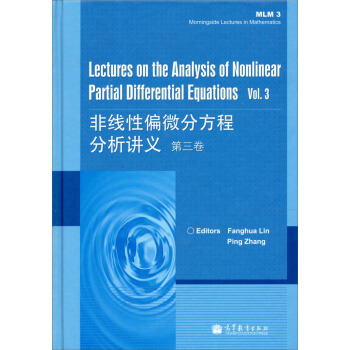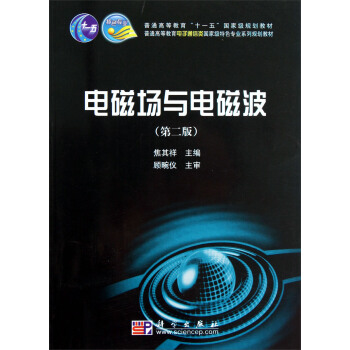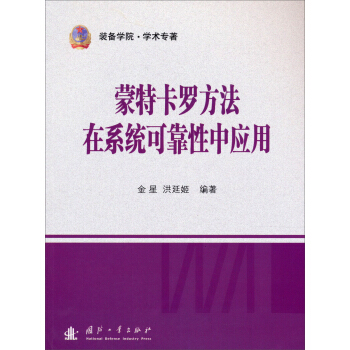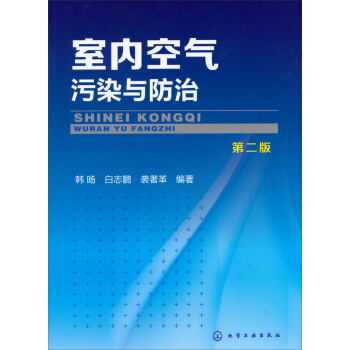![分析(第1卷) [Analysis 1]](https://pic.tinynews.org/11154487/rBEHaFDrgB8IAAAAAAa0QWiM0c8AADjLAPTmi4ABrRZ816.jpg)

具体描述
内容简介
The present book strives for clarity and transparency. Right from the begin-ning, it requires from the reader a willingness to deal with abstract concepts, as well as a considerable measure of self-initiative. For these e&,rts, the reader will be richly rewarded in his or her mathematical thinking abilities, and will possess the foundation needed for a deeper penetration into mathematics and its applications.This book is the first volume of a three volume introduction to analysis. It de- veloped from. courses that the authors have taught over the last twenty six years at the Universities of Bochum, Kiel, Zurich, Basel and Kassel. Since we hope that this book will be used also for self-study and supplementary reading, we have included far more material than can be covered in a three semester sequence. This allows us to provide a wide overview of the subject and to present the many beautiful and important applications of the theory. We also demonstrate that mathematics possesses, not only elegance and inner beauty, but also provides efficient methods for the solution of concrete problems.
内页插图
目录
PrefaceChapter Ⅰ Foundations
1 Fundamentals of Logic
2 Sets
Elementary Facts
The Power Set
Complement, Intersection and Union
Products
Families of Sets
3 Functions,
Simple Examples
Composition of Functions
Commutative Diagrams
Injections, Surjections and Bijections
Inverse Functions
Set Valued Functions
4 Relations and Operations
Equivalence Relations
Order Relations
Operations
5 The Natural Numbers
The Peano Axioms
The Arithmetic of Natural Numbers
The Division Algorithm
The Induction Principle
Recursive Definitions
6 Countability
Permutations
Equinumerous Sets
Countable Sets
Infinite Products
7 Groups and Homomorphisms
Groups
Subgroups
Cosets
Homomorphisms
Isomorphisms
8 R.ings, Fields and Polynomials
Rings
The Binomial Theorem
The Multinomial Theorem
Fields
Ordered Fields
Formal Power Series
Polynomials
Polynomial Functions
Division of Polynomiajs
Linear Factors
Polynomials in Several Indeterminates
9 The Rational Numbers
The Integers
The Rational Numbers
Rational Zeros of Polynomials
Square Roots
10 The Real Numbers
Order Completeness
Dedekind's Construction of the Real Numbers
The Natural Order on R
The Extended Number Line
A Characterization of Supremum and Infimum
The Archimedean Property
The Density of the Rational Numbers in R
nth Roots
The Density of the Irrational Numbers in R
Intervals
Chapter Ⅱ Convergence
Chapter Ⅲ Continuous Functions
Chapter Ⅳ Differentiation in One Variable
Chapter Ⅴ Sequences of Functions
Appendix Introduction to Mathematical Logic
Bibliography
Index
前言/序言
Logical thinking, the analysis of complex relationships, the recognition of under- lying simple structures which are common to a multitude of problems - these are the skills which are needed to do mathematics, and their development is the main goal of mathematics education.Of course, these skills cannot be learned 'in a vacuum'. Only a continuous struggle with concrete problems and a striving for deep understanding leads to success. A good measure of abstraction is needed to allow one to concentrate on the essential, without being distracted by appearances and irrelevancies.
The present book strives for clarity and transparency. Right from the begin-ning, it requires from the reader a willingness to deal with abstract concepts, as well as a considerable measure of self-initiative. For these e&,rts, the reader will be richly rewarded in his or her mathematical thinking abilities, and will possess the foundation needed for a deeper penetration into mathematics and its applications.
This book is the first volume of a three volume introduction to analysis. It de- veloped from. courses that the authors have taught over the last twenty six years at the Universities of Bochum, Kiel, Zurich, Basel and Kassel. Since we hope that this book will be used also for self-study and supplementary reading, we have included far more material than can be covered in a three semester sequence. This allows us to provide a wide overview of the subject and to present the many beautiful and important applications of the theory. We also demonstrate that mathematics possesses, not only elegance and inner beauty, but also provides efficient methods for the solution of concrete problems.
Analysis itself begins in Chapter II. In the first chapter we discuss qLute thor- oughly the construction of number systems and present the fundamentals of linear algebra. This chapter is particularly suited for self-study and provides practice in the logical deduction of theorems from simple hypotheses. Here, the key is to focus on the essential in a given situation, and to avoid making unjustified assumptions.An experienced instructor can easily choose suitable material from this chapter to make up a course, or can use this foundational material as its need arises in the study of later sections.
……
用户评价
《分析(第1卷)》这本书,给我的第一印象就是它散发着一种严谨而求知的学术气息,封面设计也极具辨识度,让我一眼就能识别出它在数学领域的专业定位。我一直对那些能够解释自然界普遍规律的学科充满兴趣,而数学分析无疑是其中最核心的部分。这本书就像是一本详细的地图,为我规划了一条通往理解数学分析的路径,尽管这条路需要付出大量的努力和时间。 书中的概念阐述非常细致,尤其是在介绍实数公理体系的时候,那种不厌其烦的推导和解释,让我体会到了数学的严谨性是如何一步步建立起来的。我曾在一个关于极限定义的证明上反复琢磨,试图完全理解每一个符号的含义和逻辑关系。这种深入的钻研,让我不仅掌握了知识,更学会了如何去思考数学问题,如何去构建严密的证明。 我喜欢书中在引入新概念时,所提供的背景知识和发展历史。这让我明白,数学并非凭空产生,而是人类智慧在解决实际问题过程中不断积累和发展的结晶。这种历史的视角,让我对数学产生了更深的敬畏之情。我常常会在阅读时,想象着那些伟大的数学家们是如何在有限的条件下,探索出这些深邃的真理。 这本书的语言风格非常专业,有时会显得有些抽象,需要我投入更多的精力去理解。但每一次的突破,都带来了巨大的成就感。我曾因为书中一个关于函数单调性的证明而反复推敲,最终理解了其内在的逻辑,那种感觉就像是打开了一扇新的大门。这本书不仅仅是在传授知识,更是在培养一种解决问题的能力和对真理的追求。 我一直认为,好的书籍能够引领读者进行一次深刻的自我探索。《分析(第1卷)》恰恰做到了这一点。它并没有直接给出所有问题的答案,而是通过精心的设计,引导我去发现、去思考、去证明。我虽然距离完全掌握其中的知识还有很长的路要走,但我知道,这本书是我数学学习道路上一个至关重要的起点。
评分这本书就像一本打开了新世界大门的钥匙,虽然我还没能完全理解其中的奥秘,但每一次翻阅都给我带来了全新的视角。封面设计简洁而有力,透露出一种严谨的气息,让我对即将开始的探索充满了期待。我之前接触过一些数学方面的书籍,但《分析(第1卷)》的深度和广度无疑是前所未有的。许多概念的引入都循序渐进,像是为我搭建了一条通往理解的桥梁,尽管有时候桥面有些颠簸,需要反复咀嚼和思考。 书中的插图和图表非常精美,它们不仅仅是装饰,更是帮助我理解抽象概念的得力助手。我尤其喜欢那些通过几何图形来解释微积分原理的部分,直观易懂,让原本枯燥的公式变得生动起来。虽然有时会觉得有些章节的难度系数很高,需要我投入大量的时间和精力去消化,甚至需要去查阅一些辅助资料,但这正是它吸引我的地方——它不仅仅是在传授知识,更是在培养一种解决问题的能力和深入思考的习惯。我感觉自己仿佛置身于一个数学的宇宙,而这本书就是我的导航仪,指引着我去探索那些未知的星辰大海。 我一直对那些能够从根本上解释事物运行规律的学科充满好奇,而数学分析正是其中最核心的部分。这本书在我手中,仿佛变成了一块磁石,吸引着我不断去挖掘和学习。它并没有直接给出所有答案,而是引导我一步一步地去推导、去证明,在这个过程中,我体验到了数学的严谨与逻辑之美。有时候,我会为一个证明的精妙而拍案叫绝,有时候,又会因为一个反例而陷入沉思。这本书的语言风格非常独特,有时像一位严谨的导师,不容许丝毫的含糊;有时又像一位循循善诱的朋友,用巧妙的比喻来点化我。 我记得有一次,我卡在一个定理的证明上很久,几乎想要放弃。但当我重新回顾书中的例子和推导过程时,突然灵光一闪,找到了突破口。那种茅塞顿开的感觉,真的是无与伦比。这让我深刻体会到,学习数学分析不仅仅是记忆公式和定理,更重要的是理解其背后的逻辑和思想。这本书正是做到了这一点,它让我看到了数学的生命力,看到了那些看似冰冷的符号背后蕴含着的深刻智慧。 我一直认为,真正的学习是能够激发内驱力的。而《分析(第1卷)》恰恰做到了这一点。我每天都迫不及待地想翻开它,想看看今天又会有哪些新的发现。它不仅仅是一本教科书,更像是一场思想的旅行,让我沉浸在严谨的逻辑和深刻的洞察之中。虽然我承认,有些地方的理解还有待加深,但每一次的阅读都让我感觉自己在不断进步,不断触及到更深层次的数学世界。我期待着在未来的日子里,能够继续跟随这本书的指引,探索更多更广阔的数学领域。
评分这本书的封面设计很吸引人,给我一种深刻而古朴的感觉,仿佛在诉说着数学的悠久历史和智慧。我一直觉得,数学分析是理解世界运行规律的钥匙,而《分析(第1卷)》正是为我打开这扇门的第一本。它没有回避那些看似晦涩难懂的概念,而是以一种近乎“苛刻”的严谨,逐一进行分解和阐释。 我喜欢书中对于一些基本概念的溯源,它让我明白,每一个看似理所当然的结论,背后都有着漫长而艰辛的探索过程。我曾在一个关于序列收敛的证明上花费了很长时间,试图理解每一个epsilon-delta的意义,这让我体会到了数学证明的严密性和力量。有时候,我会觉得自己的理解还不够深入,需要反复咀嚼,但正是这种反复,让我对知识的掌握更加扎实。 这本书的排版也很舒适,字体大小适中,行间距合理,即使长时间阅读也不会感到疲劳。我尤其喜欢那些图表,它们用简洁而直观的方式,将抽象的数学概念具象化,大大降低了理解的门槛。我曾因为一个关于函数连续性的图示,而茅塞顿开,理解了之前一直困扰我的问题。 我喜欢这本书的叙事方式,它并非简单的罗列公式,而是像在讲述一个关于数学真理的故事,每一个定理的出现都显得那么自然而必要。我曾因为书中的一个反例而陷入沉思,它让我明白了,在数学的世界里,细节决定成败。这本书教会我的,不仅仅是知识,更是一种严谨的思维方式。 我自认为对数学有着浓厚的兴趣,但之前的学习总感觉缺乏系统性。《分析(第1卷)》的出现,恰好填补了这一空白。它以一种高度组织化的方式,将数学分析的核心内容呈现在我面前。我虽然还有很多地方需要学习和消化,但这本书无疑为我指明了方向,让我看到了数学的广阔天地。
评分我拿到《分析(第1卷)》的时候,就被它那硬朗的装帧和厚重的篇幅所震撼,这让我意识到,我即将面对的将是一场硬仗,但也充满了吸引力。我一直以来对数学的理解都比较零散,缺乏系统性的认知,而这本书,正是我渴望的那种能够建立起完整知识体系的桥梁。它并没有把一切都讲得过于简单,而是尊重读者的智力,允许我通过思考和探索去获得理解。 书中的数学符号和术语非常规范,这让我一开始有些不太适应,需要花费一些时间来熟悉。但当我逐渐掌握了这些语言后,我发现它能够非常高效且精确地表达复杂的数学思想。我特别喜欢书中对极限概念的引入,它以一种非常严谨的方式,将那些看似“趋近”但又不“等于”的微妙关系阐述得淋漓尽致,这让我对微积分的本质有了更深的认识。 我时常会在阅读过程中遇到一些难以理解的段落,这时候我会选择放慢速度,反复阅读,甚至会尝试自己去画图或者写下一些辅助的推导。这种主动学习的过程,虽然耗时,但却让我受益匪浅。它让我不再是单纯地“读”书,而是真正地“思考”书中的内容。这本书的魅力就在于,它不会轻易地放弃任何一个读者,它总会提供一些线索,引导你去找到答案。 我曾因为书中某个证明的巧妙而反复推敲,试图从中领悟数学家的思维方式。这种对细节的关注,以及对逻辑链条的严密考察,让我对数学的严谨性有了全新的认识。这本书不是一本“速成”的读物,它需要耐心和毅力,但回报是巨大的。它让我看到了数学在科学和工程领域中的基础性作用,也让我对未来的学习充满了信心。 对我来说,《分析(第1卷)》不仅仅是一本书,更像是一位沉默的导师。它用最严谨的语言,最清晰的逻辑,引领我一步步走进数学的殿堂。我曾经历过一些挫折,但每一次克服困难后,都像是获得了新生。这本书教会我的不仅仅是数学知识,更是一种面对复杂问题时,不畏惧、不放弃的精神。
评分这本《分析(第1卷)》的扉页设计就给我一种庄重而深邃的感觉,仿佛在预示着一场智力上的盛宴。我之前尝试过一些入门级的微积分读物,但总觉得意犹未尽,像是只看到了冰山一角。《分析(第1卷)》的出现,则像是在我面前展开了一幅宏大的数学画卷。它没有回避任何细节,而是细致入微地剖析每一个概念,让原本模糊的理解变得清晰起来。我喜欢书中那种对严谨性的极致追求,每一个定义、每一个定理都经过了反复的打磨和审视,仿佛是为了确保其不容置疑的正确性。 书中大量的例题和习题,是我学习过程中最重要的实践环节。它们的设计非常有针对性,能够帮助我巩固所学的知识,并且在实践中发现自己的薄弱环节。我曾花费数小时去攻克一道难题,那种绞尽脑汁、反复尝试的过程,虽然充满挑战,但当最终找到解决方案时,那种成就感是无法比拟的。而且,这些习题并不仅仅是简单的计算,它们往往涉及到对理论的深刻理解和灵活运用,这正是我所渴望提升的数学思维能力。 我尤其欣赏书中对集合论和实数系的详尽阐述。这些基础概念的清晰梳理,为后续更复杂的分析奠定了坚实的基础。书中采用的语言风格非常专业且精准,对于初学者来说可能需要一些时间去适应,但一旦克服了初期的障碍,就会发现这种精准的表达方式能够最大程度地避免歧义,确保信息的准确传递。我喜欢这种“一是一,二是二”的数学语言,它让我感受到一种超越日常语言的逻辑力量。 这本书不仅仅是关于公式和定理的堆砌,更是在传授一种数学的哲学。它引导我思考“为什么”和“如何”,而不是简单地“是什么”。通过对一些基本概念的追根溯源,我开始理解数学体系的内在逻辑和发展脉络。我感觉自己不再是被动地接受知识,而是主动地参与到数学的构建过程中,这种体验让我对数学产生了更深的敬畏和热爱。 我是一个喜欢刨根问底的人,在学习过程中,我总会思考某个结论的由来,以及它与其他知识点之间的联系。《分析(第1卷)》这本书恰恰满足了我这种需求。它不仅仅列出结论,更会详细地展示推导过程,甚至会探讨不同证明方法的优劣。这种深入浅出的讲解方式,让我能够真正理解数学的精髓,而不是停留在表面。我感到这本书就像一位经验丰富的向导,带我深入数学的腹地,去领略那些隐藏的风景。
评分目次:全书其有四部分,新增加了5章,总共17章。(一)集合论、实数和微积分:集合论;实数体系和微积分。(二)测度、积分和微分:实线上的勒贝格理论;实线上的勒贝格积分;测度和乘积测度的扩展;概率论基础;微分和绝对连续;单测度和复测度。(三)拓扑、度量和正规空间:拓扑、度量和正规空间基本理论;可分离性和紧性;完全空间和紧空间;希尔伯特空间和经典巴拿赫空间;正规空间和局部凸空间。(四)调和分析、动力系统和hausdorff侧都:调和分析基础;可测动力系统;hausdorff测度和分形。
评分作者的典型风格,因为他们承认在他们的前言,是定义数学对象和概念在最一般的方式。他们,然后通过这些定义的后果。考虑一个特定的例子,这种方法,社区的定义提出了三世的连续性。1,一个函数(定义度量空间之间)是连续在x如果每个社区V f(x)存在一个这样的社区你x f(U)包含在诉随后,证明这是相当于两个传统的ε三角洲定义和连续性的情况定义在条款的收敛序列。作者也表明连续性所以定义也同样适用于一个赋范矢量空间(因为每个赋范矢量空间也是一个度量空间)。
评分开笔此书前,我曾列过一个写作计划。按人名顺序一个接一个去罗列—他们都是些浪荡江湖,和我的人生轨迹曾交叉重叠的老友们。 当时,我坐在一辆咣当咣当的绿皮火车里,天色微亮,周遭是不同省份的呼噜声。我找了个本子,塞着耳机一边听歌一边写……活着的、死了的、不知不觉写满了七八页纸。我吓了一跳,怎么这么多的素材?不过十年,故事却多得堆积如山,这哪里是一本书能够写的完的。 头有点儿大,不知该如何取舍,于是索性随手圈了几个老友的人名。反正写谁都是写,就像一大串美味的葡萄,随手摘下的,都是一粒粒饱满的甜。随手圈下的名单,是为此书篇章构成之由来。圈完后一抬头,车窗外没有起伏,亦没有乔木,已是一马平川的华北平原。 书的创作过程中,我慢慢梳理出了一些东西,隐约发现自己将推展开的世界,于已经习惯了单一幸福感获取途径的人们而言,那是另一种幸福感。 那是一些值得我们去认可、寻觅的幸福感。他们或许是陌生的,但发着光。在我的认知中,一个成熟健全的当代文明社会,理应尊重多元的个体价值观,理应尊重个体幸福感获得方式。这种尊重,应该建立在了解的基础之上,鉴于国人文化传统里对陌生事物的天然抵触因子,“如何去了解”这几个字愈发重要。 那么,亲爱的们,我该如何去让你了解那些多元而又陌生的幸福感呢? 写书时,恰逢山东大学抬爱,让我有缘受聘于山东大学儒学高等研究院,于是趁机做了一场名为《亚文化下成长方式的田野调查》的报告讲座。 那天会场塞满了人,场面出乎意料的火爆,来的大都是85 后和90后。我讲的就是这份名单:大军、路平、月月、白玛央宗……我和他们的共同生活就是一场田野调查。我没用太学术的语言词汇去贯穿讲座,但讲了许多细节的故事, 那天的叙述方式,是为本书行文的基调。 卡尔维诺说:“要把地面上的人看清楚,就要和地面保持距离”。这句话给我带来一个意像:一个穿西服打领带的人,手足并用爬在树上,和大部分同类保持着恰当的距离。他晃荡着腿,骑在自我设定的叛逆里,心无挂碍,乐在其中。偶尔低头看看周遭过客,偶尔抬头,漫天星斗。 我期待出到第十本书的时候,也能爬上这样一棵树。 当下是我第一本书,芹献诸君后,若价值观和您不重叠、行文有不得人心处,请姑念初犯…… 我下次不会改的。 等我爬上树了再说。 我不敢说这本书写得有多好多好,也懒得妄自菲薄,只知过程中三易其稿,惹得责编戴克莎小姐几度差点儿忿极而泣。如此这般折腾,仅为本色二字:讲故事人的本色,故事中人们的本色。 或许,打磨出本色的过程,也是爬树的过程吧。 文至笔端心意浅,话到唇畔易虚言,且洒莲实二三子,自有方家识真颜。 这本书完稿后,我背起吉他,从北到南,用一个月的时间挨个去探望了书中的老友们,除了那个不用手机的女孩,其他的人我几乎见了一个遍。
评分Gooooooooooooooood
评分人都是有局限性的,「提升自我」这件事不只是技能上的提升,更核心的是视野、理念、思维方式这些意识世界里的东西。「读史使人明智,读诗使人灵秀,数学使人周密,科学使人深刻,伦理学使人庄重,逻辑修辞之学使人善辩:凡有所学,皆成性格。」第
评分Hilbert space(希尔伯特空间)的定义是一个complete的inner product space。LZ所说的空间是l^2,只是一种Hilbert空间的例子。
评分导数不出现,直到301页,但当它介绍,它定义在条款的这东西到底是什么:一个线性近似。在大多数文本,这个观点并不是讨论直到“多元”分析覆盖。
评分导数不出现,直到301页,但当它介绍,它定义在条款的这东西到底是什么:一个线性近似。在大多数文本,这个观点并不是讨论直到“多元”分析覆盖。
评分值得数学系本科生,研究生看看,是一本好书!
相关图书
本站所有内容均为互联网搜索引擎提供的公开搜索信息,本站不存储任何数据与内容,任何内容与数据均与本站无关,如有需要请联系相关搜索引擎包括但不限于百度,google,bing,sogou 等
© 2025 book.tinynews.org All Rights Reserved. 静思书屋 版权所有


![细胞生物学实验指南(第2版) [Experiments in Cell Biology:A Student's Guide] pdf epub mobi 电子书 下载](https://pic.tinynews.org/11172815/567105b0N8ee7dcef.jpg)







![高等学校教材(8):应用泛函分析 [Applied Functional Analysis(Third Edition)] pdf epub mobi 电子书 下载](https://pic.tinynews.org/11213143/rBEQWVF3LkgIAAAAAAesJ-KYyNsAAE0EgGZiggAB6w_638.jpg)









